Strings and scale length
The strings are of fundamental importance for the quality of the sound and the development of the fingers’ touch. Vibration of our sound stems from the strings which, in particular, connect us to the instrument. Strings are the bridge between our mind/heart and the music.
Strings are clearly made of metal materials in order to interact with the magnets inside the pickups. Normally they are made of stainless steel and/or nickel. They consist of a solid steel core around which coils of one or more steel/nickel metal wires are wound (they can also be chromed, gilded, covered with copper, nylon or other synthetic materials of various colors). The core can be hexagonal making the whole string more resistant for a longer time.
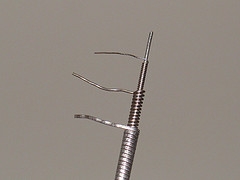
COILS AROUND THE CORE
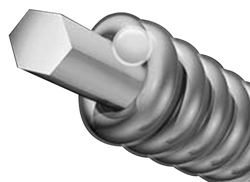
HEXAGONAL CORE
The main feature about strings is their age. The older they are, the poorer the sound will be in the high frequencies (high harmonics) and will tend to be dark (as well as producing some tuning and intonation problems), on the contrary new strings shine and sing. A bright and clear sound can be particularly appreciated when playing with the slap and tapping techniques.
Another important issue is about the choice of smooth strings (Flatwound) or rough ones (Roundwound). Strings’ roughness or smoothness is determined by the external winding of the strings. Smooth strings (flat section wrapping) produce a soft sound, rather peculiar in Jazz (where the fundamental prevails but the sustain is reduced). They facilitate the glissato and are very comfortable for fingers. Coarse strings (round section wrapping) produce brighter sounds with more sustain and sharp attack (we might say “aggressive” attack). These are versatile strings suitable for slap and tapping techniques. Nevertheless, it is possible to find some trade-off between these two kinds. There exist some strings with an intermediate degree of smoothness/coarseness (Halfwound o Groundwound).

FLATWOUND STRING

ROUNDWOUND STRING
Another important feature to be taken into account is the strings’ diameter. It is measured in “inches” (1 inch = 2,54 cm). Diameters vary on a wide range. There are so called “light” strings with small diameters, mostly preferred by virtuosi, because enable a good control and agile playing. There are very “heavy” strings as well, very good for a robust sound.
In the table below we can see the most common sizes (in inches and millimeters). The string sets’ names are indicative as well as the sizes’ combinations.

Electric bass strings’ diameter chart
Finally, one must take into account the scale length of the free vibrating string. That is the length from the nut to the saddle on the bridge (also called Diapason).
The standard length, 34”/86,36cm, was established by the great Leo Fender back in 1951. This is the most common length and it is called long scale.
The short scale, ideal for small hands, up to slight variations, is 30”/76.2 cm. Famous bass models with this scale are the legendary Höfner 500/1 violin bass by Paul McCartney (to be precise 30, 25”/ 76.84 cm), the Fender Mustang Bass, the beautiful Gibson EB-3 played by Jack Bruce (30.5”/77.47). More affordable basses include the Greg Bennett Corsair.
There is an intermediate scale length (medium scale) which is 32”/81,28 cm as in the Stuart Hamm‘s Kubicki Ex-Factor This bass also has a particular mechanism (added in his peculiar headstock): a clamp, connected with a lever, allows to lengthen the IV string from 32” to 36” transforming the open E into the low D (the system is called drop D) and extending the fingerboard by two frets.
Concluding there are also basses with scales longer than 34”. For instance, many Modulus adopting the 36”/91,44 cm scale (apparently the high C gains a fuller sound). An example of this type is the Fodera Anthony Jackson Presentation Contrabass Guitar or Carl Thompson (38”). This kind of scale is normally called extra long scale and it is well-suited for musicians with relatively big hands.
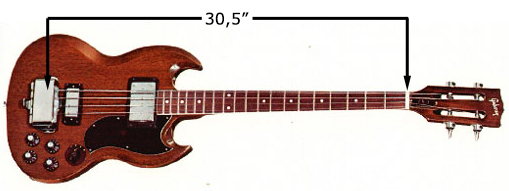
GIBSON EB-3: SHORT SCALE (30,5”)
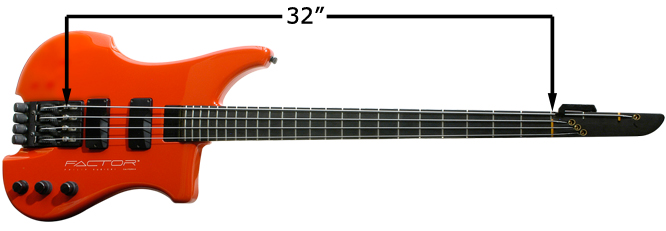
KUBICKI EX-FACTOR: MEDIUM SCALE (32”)
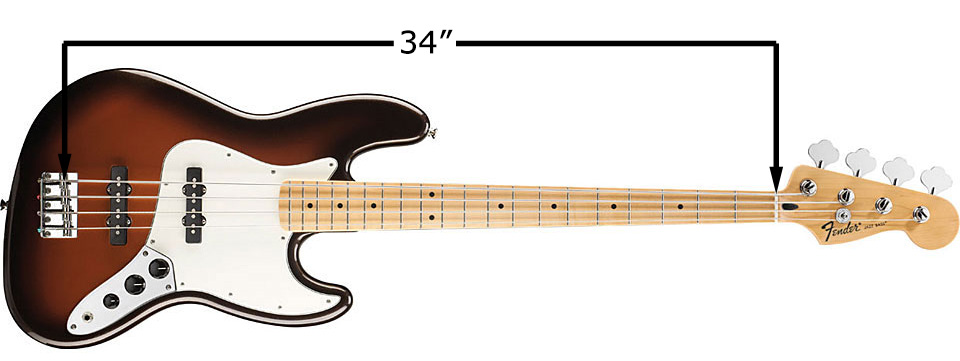
FENDER JAZZ: LONG SCALE (34”)
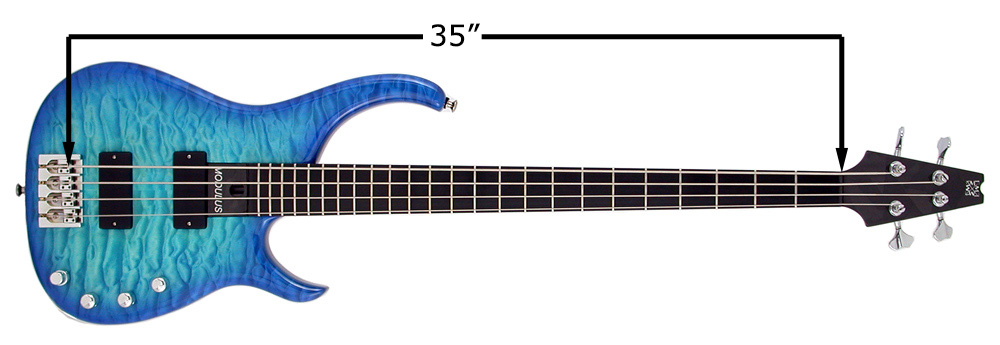
MODULUS QUANTUM: EXTRA LONG SCALE (35”)
The possibility to choose between different sizes of strings and scales length must be considered in relation to your personal needs and experiences. As for the strings, so important for our sound, the advice is to experiment as much as possible with the diameters, the materials with which they are built and the models of the various manufacturers; on the one hand, a smaller diameter enhances sensitivity in the touch but, on the other hand, it reduces the robustness of your sound.
The measure of the hands and the tonal quality of the lower strings are instead the reference points in the eventual choice of scale.
We conclude this section with a very simple technical information: the string’s worst enemy is sweat: cleaning them with a cloth after playing helps to maintain them.
